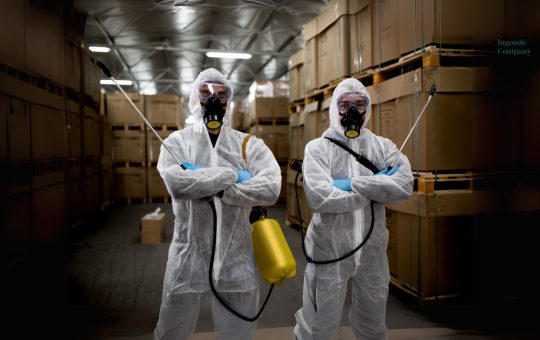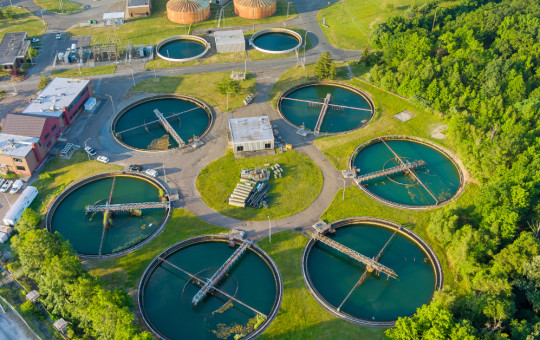
Level 3 Award in Advanced Fall Protection Strategies
Course Overview
The Level 3 Award in Process Safety Management Systems provides in-depth knowledge and skills for implementing and maintaining robust safety protocols in process-driven industries. This course focuses on identifying and mitigating risks associated with hazardous processes, ensuring regulatory compliance, and fostering a culture of safety excellence.
Designed for professionals in chemical, petrochemical, oil and gas, and other high-risk industries, this certification equips learners with advanced tools to protect employees, assets, and the environment.
Benefits
- Risk Mitigation: Reduce the likelihood of catastrophic events in process operations.
- Regulatory Compliance: Ensure adherence to local and international process safety standards.
- Industry Best Practices: Gain knowledge of globally recognized safety management systems.
- Improved Efficiency: Streamline operations while maintaining safety.
- Career Advancement: Enhance qualifications for roles in process safety and HSE management.
Learning Outcomes
By completing this course, participants will be able to:
- Understand the key principles and components of process safety management (PSM).
- Develop and implement process safety policies and procedures.
- Conduct hazard identification and risk assessments for complex processes.
- Manage operational risks using advanced safety tools and techniques.
- Monitor and audit the effectiveness of PSM systems.
- Respond to and investigate process-related incidents effectively.
Study Units
Unit 1: Fundamentals of Process Safety Management
- Introduction to process safety and its importance.
- The difference between occupational safety and process safety.
- Key elements of a process safety management system (PSMS).
Unit 2: Regulatory Frameworks and Standards
- Overview of process safety regulations (e.g., OSHA PSM, COMAH).
- International standards for process safety (e.g., ISO, API, NFPA).
- Compliance requirements for high-hazard industries.
Unit 3: Hazard Identification and Risk Assessment (HIRA)
- Techniques for hazard identification (e.g., HAZID, HAZOP).
- Quantitative and qualitative risk assessment methods.
- Developing and prioritizing mitigation strategies.
Unit 4: Control of Critical Processes
- Design and operation of safety-critical equipment.
- Engineering controls and safety instrumented systems (SIS).
- Maintenance and inspection of critical process components.
Unit 5: Emergency Preparedness and Incident Response
- Developing emergency response plans for process industries.
- Incident investigation and root cause analysis.
- Lessons learned and continuous improvement.
Unit 6: Leadership and Safety Culture
- Promoting a culture of safety in process-driven organizations.
- Leadership roles in implementing process safety.
- Communication strategies for fostering safety awareness.
Career Progression
The Level 3 Award in Process Safety Management Systems opens up opportunities in various sectors, including:
- Process Safety Engineer: Develop and oversee safety strategies for complex processes.
- HSE Manager: Lead health, safety, and environment programs for high-risk industries.
- Compliance Officer: Ensure adherence to process safety regulations.
- Safety Consultant: Provide expert guidance on process safety systems and best practices.
- Plant Operations Manager: Manage plant operations with a focus on safety and efficiency.
This certification is ideal for individuals aiming to enhance their expertise and take on leadership roles in safety management for process-intensive industries.
Course Overview
The Level 3 Award in Advanced Fall Protection Strategies is designed to equip professionals with the advanced knowledge and skills necessary to prevent falls and implement comprehensive fall protection systems in high-risk environments. This course emphasizes planning, system selection, risk assessment, and emergency response strategies.
It is ideal for supervisors, managers, safety officers, and individuals working in industries where fall hazards are prevalent, such as construction, manufacturing, energy, and telecommunications.
Benefits
- Enhanced Safety: Minimize fall-related risks and injuries through effective strategies.
- Regulatory Compliance: Meet national and international fall protection standards.
- Expert Knowledge: Gain expertise in advanced fall protection systems and techniques.
- Emergency Readiness: Learn to handle fall-related emergencies efficiently.
- Career Advancement: Improve qualifications for roles in fall protection and safety leadership.
Learning Outcomes
By completing this course, participants will be able to:
- Identify and evaluate fall hazards in diverse work environments.
- Develop comprehensive fall protection programs tailored to organizational needs.
- Select and implement appropriate fall protection systems and equipment.
- Conduct advanced risk assessments for elevated workspaces.
- Train workers in fall prevention and emergency response.
- Investigate and analyze fall incidents to prevent recurrence.
Study Units
Unit 1: Fundamentals of Fall Protection
- Overview of fall hazards and common workplace incidents.
- Key principles of fall prevention and protection.
- Legal and regulatory requirements for fall protection systems.
Unit 2: Advanced Risk Assessment for Fall Hazards
- Identifying and assessing fall risks in complex environments.
- Evaluating work surfaces, anchor points, and access methods.
- Hierarchy of fall protection controls.
Unit 3: Fall Protection Systems and Equipment
- Overview of fall arrest, restraint, and work positioning systems.
- Selection, inspection, and maintenance of fall protection equipment.
- Advanced techniques for system installation and use.
Unit 4: Emergency Response Planning
- Developing fall rescue plans and procedures.
- Selecting and using fall rescue equipment.
- Emergency response training and drills.
Unit 5: Incident Investigation and Analysis
- Investigating fall-related incidents effectively.
- Root cause analysis techniques.
- Implementing corrective actions and continuous improvement measures.
Unit 6: Leadership in Fall Protection
- Building a culture of fall safety within an organization.
- Roles and responsibilities of supervisors and managers.
- Communicating the importance of fall protection to workers.
Career Progression
The Level 3 Award in Advanced Fall Protection Strategies prepares participants for roles such as:
- Fall Protection Specialist: Design and manage fall protection systems.
- HSE Manager: Oversee workplace safety with a focus on fall prevention.
- Safety Trainer: Conduct fall protection and rescue training programs.
- Construction Site Supervisor: Ensure safety protocols are followed at elevated worksites.
- Safety Consultant: Provide expert advice on fall protection strategies for various industries.
This certification is a stepping stone to becoming a recognized leader in fall safety and prevention.
Our assessment process is designed to ensure every learner achieves the required level of knowledge, skills, and understanding outlined in each course unit.
Purpose of Assessment
Assessment helps measure how well a learner has met the learning outcomes. It ensures consistency, quality, and fairness across all learners.
What Learners Need to Do
Learners must provide clear evidence that shows they have met all the learning outcomes and assessment criteria for each unit. This evidence can take different forms depending on the course and type of learning.
Types of Acceptable Evidence
Assignments, reports, or projects
Worksheets or written tasks
Portfolios of practical work
Answers to oral or written questions
Test or exam papers
Understanding the Structure
Learning outcomes explain what learners should know, understand, or be able to do.
Assessment criteria set the standard learners must meet to achieve each learning outcome.
Assessment Guidelines
All assessment must be authentic, current, and relevant to the unit.
Evidence must match each assessment criterion clearly.
Plagiarism or copied work is not accepted.
All learners must complete assessments within the given timelines.
Where applicable, assessments may be reviewed or verified by internal or external quality assurers.
Full learning outcomes and assessment criteria for each qualification are available from page 8 of the course handbook.
Top Courses
No results found.
Related Courses
Let's Get in touch
Deleting Course Review
Course Access
This course is password protected. To access it please enter your password below:



